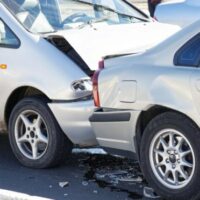NH Personal Injury Attorneys Describe Common Causes of Car Crashes

If you have been injured in a car crash, the NH personal injury attorneys at the Law Office of Manning Zimmerman & Oliveira PLLC may be able to help you receive compensation. Car crashes are a common occurrence on the roads, but there are various ways to avoid being involved in one. To do so, it is important to understand the most common types of crashes and why they occur.
Hitting a Parked Car
When most people think of a car crash, they think of two vehicles traveling at high speeds on the road. In reality, parked cars are often involved in crashes that result in hundreds if not thousands of dollars in damages. One of the most common scenarios in which a parked car crash occurs is when you are backing out of a driveway without checking behind your vehicle. It is easy to miss a parked car in your blind spot, even if you are using a backup camera and your mirrors. To reduce your risk of hitting a parked car or having another driver collide with your parked vehicle, consider parking further away. Tight parking spots increase the risk of a crash, even if you do manage to park successfully. The driver next to you or behind you may have a harder time leaving the parking spot.
Rear-Enders
Rear-end crashes occur when a vehicle hits the car in front of it. The National Highway Transportation Safety Administration reports that 29 percent of all crashes are rear-ended collisions. A study by the Administration found that rear-end collision drivers were distracted from the road by various activities. From looking at something off of the road, to talking or texting on the phone, it is best to minimize the risk of a rear-end collision by keeping your attention focused on the road.
Hydroplaning
Standing water requires your tires to move water out of the way to stay in contact with the road. When water goes above the tread of your tires it becomes difficult for them to maintain traction on the road, which leads to hydroplaning. Hydroplaning occurs when the car accelerates to the point where the tires are unable to successfully move water away from the road and leaves a layer of water between them. Once this occurs, you are no longer in control of your vehicle. The car may go in a different direction regardless of your attempts to steer since your wheels are not working properly. If you try to brake suddenly while hydroplaning, your wheels will become like water skis, propelling your car forward at a faster rate. Hydroplaning is easier to avoid if you drive at a slower rate of speed, especially when it first starts to rain. Slowing your vehicle makes it possible for your tires to come into contact with the road again. Tires with worn treads are more likely to hydroplane since there is nowhere for the water to go. Steady pressure applied to the brakes can also help slow your vehicle to a safer speed until it regains traction.
Animals
Animals are also a common cause of accidents on the road, particularly when it comes to rural areas. To avoid an animal collision, drive with your high beams on when traveling through a rural area at night. Following the posted speed limit in any area is important as it gives you more time to slow down if you encounter an obstacle on the road.
Side-Impact Collisions
The Insurance Institute for Highway Safety conducted a 2009 study, finding that 27 percent of deaths among passengers are caused by T-bone collisions. T-bone collisions occur when one vehicle collides with the side of another vehicle that has the right of way. These deadly collisions are often caused by drivers who are speeding or not attending to the flow of traffic at an intersection. To avoid being involved in a T-bone collision, look both ways for any oncoming vehicles, even if you have the right of way. You should always come to a full stop at red lights and stop signs to ensure that no distracted drivers are coming towards you. Side-impact collisions are generally more severe than other types of accidents because the side of a vehicle has less room for protective technology than the front or rear. Side collisions are also dangerous because the side of a vehicle has less room to absorb the impact of a crash while the rear and front of a vehicle are made to fold and absorb shock. Head-protecting side airbags can help reduce the risk of fatalities or serious injuries in a T-bone collision. Crash tests have found that these airbags are highly effective when it comes to protecting the head during an accident. The NH personal injury attorneys at the Law Office of Manning Zimmerman & Oliveira PLLC may be able to assist you in seeking compensation if you are injured in a crash. Knowing these common causes of crashes can help you learn to avoid them. From buying safer vehicles to practicing the rules of the road and attending to traffic, there are a variety of ways to make yourself safer on the road. The most important method is to always be aware of your surroundings when driving.
Contact NH Personal Injury Attorneys
To speak with experienced NH personal injury attorneys, call the Law Office of Manning Zimmerman & Oliveira PLLC at 603-624-7200.

